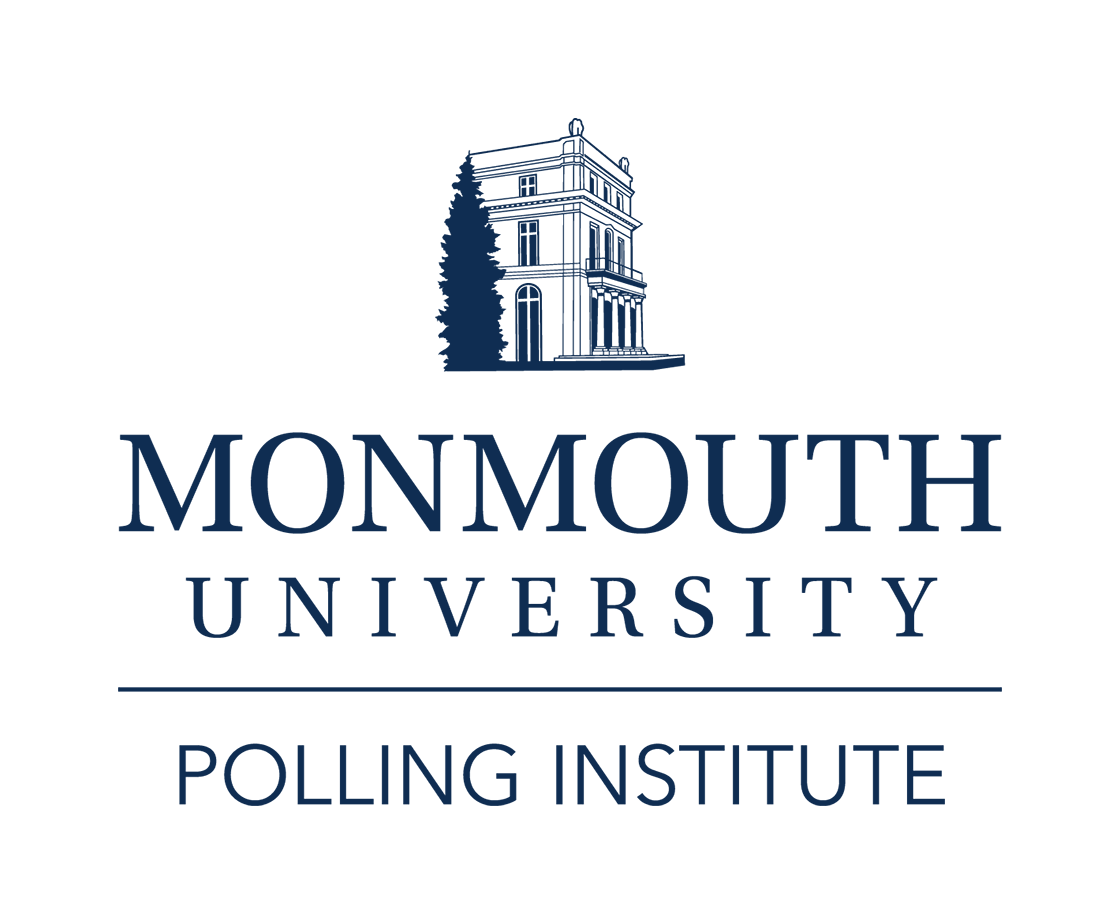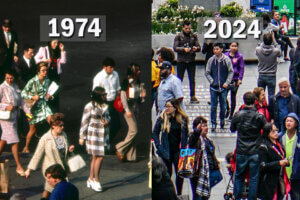For commentary on poll results and NCAA issues:
DR. PAUL R. BROWN, President Monmouth University
732-571-3526 (public affairs office)
For information on poll results and methodology:
PATRICK MURRAY, Monmouth University Polling Institute
732-979-6769 (cell) | 732-263-5858 (office)
pdmurray@monmouth.edu | Twitter: @PollsterPatrick
West Long Branch, NJ – A national Monmouth University Poll released in the lead-up to the inaugural Division I college football championship game finds that most Americans feel that colleges and universities with high-profile sports programs put too much emphasis on athletics. Most believe the attention received by schools with professional-style sports programs puts pressure on other colleges and universities to step up their own athletics programs, while losing money in the process. The public also feels that the National Collegiate Athletic Association (NCAA) policies tend to benefit big-time programs over other schools.
Just 24% of Americans believe that colleges and universities with big-time sports programs maintain the right balance between academics and athletics. Fully 67% say these schools place too much emphasis on their sports programs. This opinion is somewhat reversed when the public looks at other higher education institutions without high-profile sports programs. Half (50%) say these schools maintain the right balance while 38% say these schools place too much emphasis on sports. College graduates are among those most likely to feel that big-time sports schools over-emphasize athletics (71%) while other colleges and universities are able to maintain the right balance between sports and academics (58%).
“Americans are in love with big-time college sports, but as the Monmouth poll makes clear, they also recognize that many institutes of higher education are not properly balancing the important mix of athletics and academics,” said Dr. Paul R. Brown, president of Monmouth University, a Division I institution in West Long Branch, New Jersey. “Whether we reside at a football or basketball powerhouse or at a mid-size or small college or university where athletics round out the student experience, we as educators have a responsibility to prepare each student for the future. For all but a tiny few, that means ensuring that we put the emphasis on the ‘student’ part of the student-athlete.”
The public is divided on the role of the NCAA in creating this disparity – 42% say it does a bad job encouraging its member schools to maintain a proper balance between athletics and academics, while 39% say it does a good job at this. College graduates are significantly more likely to say the NCAA does a bad job (53%) rather than good job (29%) at promoting academic quality. A two-thirds (66%) majority of the public, regardless of educational attainment, feels that NCAA policies are designed to benefit big-time sports schools over other programs. Only 18% say that NCAA polices are designed to provide equal benefit to big-time programs as well as those schools without high-profile sports.
Some observers have called for a dual system of overseeing Division I college athletics. The NCAA would continue to organize the 70 to 80 schools that play in conferences with professional-style programs, while another association would be formed for the other 270 schools that compete in Division I. Public opinion is somewhat divided on this plan, with more saying it is a good idea (44%) rather than a bad idea (36%), and another 21% registering no opinion or saying it depends.
“I think this poll underscores the fact that the system in its current form is broken, and that we need to look more realistically, more practically at our oversight of college athletics,” Brown said. “What is becoming increasingly clear to me, as the president of a mid-size, private school that values college athletics, is that one system and one set of rules does not and cannot work for everyone.”
Fully 3-in-4 Americans believe that the attention received by high-profile college sports programs creates pressure for other schools to put more emphasis than they should on their own sports programs – including a clear majority (53%) who say this creates a lot of pressure and another 22% who say it creates at least a little pressure. Only 18% say that the attention generated by big-time college sports puts no pressure on other schools to pour more resources into their own programs.
The vast majority (77%) of Americans believe that big-time sports programs generate a lot of money for their respective schools – and another 9% say they earn a little money. Public perception is not the same for other schools. Most Americans (53%) believe that schools without high-profile teams actually lose money on their sports programs. Only 30% feel these schools make at least a little money from their athletic activities.
The Monmouth University Poll was conducted by telephone from December 10 to 14, 2014 with 1,008 adults in the United States. This sample has a margin of error of ± 3.1 percent. The poll was conducted by the Monmouth University Polling Institute in West Long Branch, New Jersey.
The questions referred to in this release are as follows:
(* Some columns may not add to 100% due to rounding.)
[QUESTIONS 1 & 2 WERE ROTATED]
1. Do you think colleges and universities that have big-time sports programs maintain the right balance between academics and athletics or do they place too much emphasis on athletics over academics?
|
TOTAL |
GENDER | AGE |
EDUCATION | ||||||
|
Male | Female | 18-34 | 35-54 | 55+ | H.S. or less | Some college |
College | ||
| Maintain right balance between academics and athletics | 24% | 28% | 20% | 31% | 22% | 19% | 20% | 30% | 23% |
| Place too much emphasis on athletics over academics | 67% | 64% | 69% | 61% | 68% | 71% | 68% | 60% | 71% |
| (VOL) Don’t know | 10% | 8% | 11% | 8% | 10% | 11% | 12% | 11% | 5% |
2. Do you think colleges and universities that have athletic teams but NOT big-time sports programs maintain the right balance between academics and athletics or do they place too much emphasis on athletics over academics?
|
|
TOTAL |
GENDER | AGE |
EDUCATION | |||||
|
Male | Female | 18-34 | 35-54 | 55+ | H.S. or less | Some college |
College | ||
| Maintain right balance between academics and athletics | 50% | 51% | 49% | 65% | 48% | 37% | 42% | 54% | 58% |
| Place too much emphasis on athletics over academics | 38% | 38% | 38% | 30% | 38% | 46% | 43% | 36% | 32% |
| (VOL) Don’t know | 12% | 11% | 13% | 5% | 14% | 17% | 15% | 10% | 10% |
3. Do you think the National Collegiate Athletic Association, also known as the N.C.A.A., does a good job or bad job encouraging its member schools to maintain a proper balance between athletics and academics?
|
TOTAL |
GENDER | AGE |
EDUCATION | ||||||
|
Male | Female | 18-34 | 35-54 | 55+ | H.S. or less | Some college |
College | ||
| Good job | 39% | 41% | 37% | 45% | 38% | 34% | 45% | 40% | 29% |
| Bad job | 42% | 45% | 39% | 39% | 44% | 43% | 36% | 40% | 53% |
| (VOL) Don’t know | 19% | 14% | 25% | 16% | 19% | 23% | 20% | 20% | 18% |
[QUESTIONS 4 & 5 WERE ROTATED]
4. Do you think colleges and universities with big-time sports programs generally make money or lose money on their athletic programs? [If MAKE/LOSE: Is that a lot or a little money?]
|
TOTAL |
GENDER | AGE |
EDUCATION | ||||||
|
Male | Female | 18-34 | 35-54 | 55+ | H.S. or less | Some college |
College | ||
| Make a lot of money | 77% | 77% | 77% | 81% | 77% | 73% | 74% | 79% | 81% |
| Make a little money | 9% | 11% | 8% | 8% | 10% | 11% | 10% | 9% | 8% |
| Lose a little money | 4% | 4% | 3% | 5% | 3% | 3% | 5% | 3% | 2% |
| Lose a lot of money | 3% | 3% | 3% | 2% | 4% | 4% | 4% | 2% | 4% |
| (VOL) Break even | 1% | 2% | 1% | 1% | 1% | 2% | 1% | 2% | 1% |
| (VOL) Don’t know | 5% | 3% | 7% | 4% | 5% | 8% | 7% | 5% | 4% |
5. Do you think colleges and universities that do NOT have big-time sports programs generally make money or lose money on their athletic programs? [If MAKE/LOSE: Is that a lot or a little money?]
|
TOTAL |
GENDER | AGE |
EDUCATION | ||||||
|
Male | Female | 18-34 | 35-54 | 55+ | H.S. or less | Some college |
College | ||
| Make a lot of money | 11% | 10% | 12% | 8% | 13% | 12% | 15% | 8% | 8% |
| Make a little money | 19% | 20% | 18% | 22% | 21% | 15% | 18% | 23% | 18% |
| Lose a little money | 36% | 40% | 31% | 38% | 36% | 33% | 34% | 34% | 41% |
| Lose a lot of money | 17% | 15% | 19% | 18% | 15% | 17% | 17% | 17% | 16% |
| (VOL) Break even | 4% | 4% | 5% | 5% | 3% | 5% | 3% | 5% | 6% |
| (VOL) Don’t know | 13% | 10% | 15% | 9% | 12% | 17% | 14% | 13% | 11% |
6. Do you think that the attention received by high-profile college sports programs creates pressure for other schools to put more emphasis than they should on their own sports programs, or do you think that this attention does not create pressure for other schools? [If CREATES PRESSURE: Is that a lot or just a little pressure?]
|
TOTAL |
GENDER | AGE |
EDUCATION | ||||||
|
Male | Female | 18-34 | 35-54 | 55+ | H.S. or less | Some college |
College | ||
| Creates a lot of pressure | 53% | 58% | 48% | 48% | 57% | 53% | 59% | 48% | 50% |
| Creates a little pressure | 20% | 19% | 21% | 26% | 19% | 16% | 17% | 23% | 21% |
| (VOL) Creates pressure, not sure how much | 2% | 2% | 3% | 3% | 2% | 2% | 2% | 3% | 3% |
| Does NOT create pressure | 18% | 16% | 20% | 18% | 16% | 19% | 14% | 20% | 21% |
| (VOL) Don’t know | 7% | 5% | 9% | 6% | 6% | 10% | 8% | 7% | 4% |
7. When the N.C.A.A. makes policies about college athletics, do you think that those policies are designed to equally benefit big-time sports schools as well as schools without big-time programs, or are those policies designed to benefit the big-time sports schools more?
|
TOTAL |
GENDER | AGE |
EDUCATION | ||||||
|
Male | Female | 18-34 | 35-54 | 55+ | H.S. or less | Some college |
College | ||
| Designed to equally benefit | 18% | 20% | 15% | 19% | 18% | 15% | 18% | 20% | 14% |
| Designed to benefit big-time sports schools | 66% | 66% | 67% | 69% | 65% | 65% | 66% | 63% | 70% |
| (VOL) Depends on policy | 2% | 3% | 2% | 2% | 2% | 2% | 2% | 1% | 3% |
| (VOL) Don’t know | 14% | 11% | 16% | 10% | 15% | 17% | 14% | 15% | 12% |
8. Some observers have called for a dual system of overseeing Division One college athletics. The N.C.A.A. would continue to be the organizing body for the 70 to 80 schools that play in conferences with professional-style programs, while another association would be formed for the other 270 schools that compete in Division One. Does this system sound like a good idea or bad idea to you?
|
TOTAL |
GENDER | AGE |
EDUCATION | ||||||
|
Male | Female | 18-34 | 35-54 | 55+ | H.S. or less | Some college |
College | ||
| Good idea | 44% | 46% | 41% | 56% | 41% | 34% | 45% | 43% | 42% |
| Bad idea | 36% | 37% | 34% | 28% | 40% | 38% | 33% | 37% | 37% |
| [VOL] Depends | 3% | 2% | 4% | 4% | 3% | 2% | 2% | 4% | 4% |
| (VOL) Don’t know | 18% | 15% | 21% | 12% | 16% | 26% | 19% | 16% | 17% |
The Monmouth University Poll was sponsored and conducted by the Monmouth University Polling Institute from December 10 to 14, 2014 with a national random sample of 1,008 adults age 18 and older. This includes 677 contacted by a live interviewer on a landline telephone and 331 contacted by a live interviewer on a cell phone. Monmouth is responsible for all aspects of the survey design, data weighting and analysis. Final sample is weighted for region, age, education, gender and race based on US Census information. Data collection support provided by Braun Research (field) and SSI (RDD sample). For results based on this sample, one can say with 95% confidence that the error attributable to sampling has a maximum margin of plus or minus 3.1 percentage points. Sampling error can be larger for sub-groups (see table below). In addition to sampling error, one should bear in mind that question wording and practical difficulties in conducting surveys can introduce error or bias into the findings of opinion polls.
|
POLL DEMOGRAPHICS (weighted) | |||
| 27% Rep | 49% Male | 32% 18-34 |
66% White |
| 42% Ind | 51% Female | 36% 35-54 |
12% Black |
| 31% Dem | 32% 55+ |
15% Hispanic | |
|
7% Asian/Other | |||
Click on pdf file link below for full methodology and results by key demographic groups.




